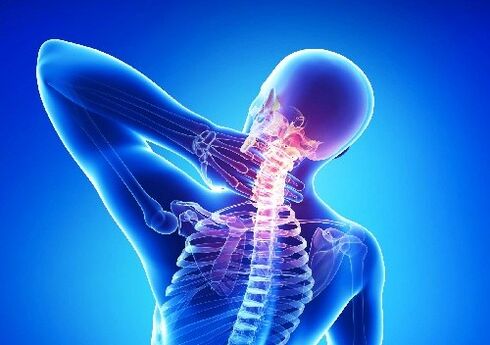Cervical osteochondrosis belongs to a number of diseases that suffer a large number of people around the world.Most often, this disease is caused by a sedentary lifestyle.The manifestation of this type of osteochondrosis is concentrated in the neck and is quite common pathology.Cervical osteochondrosis is a serious disease because its symptoms are not always unambiguous and given its location, this pathology can lead to negative processes in other areas.

To find out how to treat this deviation and what should be done first, you need to start with the foundations of cervical osteochondrosis.As mentioned earlier, this disease occurs in connection with a sedentary lifestyle.Speaking of this type of osteochondrosis, I would like to point out immediately that it differs largely from osteochondrosis as a whole.The fact is that the cervical department is a dangerous and responsible area of the spine.
Symptoms of cervical osteochondrosis
To fully determine the degree of illness and prescribe proper treatment, you must first determine all the symptoms.In this case, three groups of complexity are observed for the symptoms of cervical osteochondrosis.
The first group.This group of symptoms belongs to the neurological part.The fact is that with the curvature of the cervical vertebrae, pressure on the discs and respectively on the nerve roots can occur.Nervous plexus can also fall under pressure.In this way, the list of symptoms involves neck pain.There is also a likelihood of acute piercing pain and cervical radiculitis.If the condition is more complicated, then pain in the joints and muscles in the chest can occur.
The second group.In this group, the symptoms occur due to the effect of osteochondrosis on the spinal cord.It is worth noting that at this stage there are two types of effects on the onset of symptoms.The first can be called a nucleus squeeze that has fallen from the disc, and the second influence occurs when the spinal cord is wounded with hard growths.
In this case, weakness in the lower and upper limbs is often observed.Light and almost invisible twitching in the hands may also occur, not accompanied by painful sensations.
The third group.This is the most difficult form that gives severe symptoms.Here we are already talking about the impact of pathology on brain processes.In this situation, the brain is already beginning to suffer from a deficiency of blood flow to the brain.And such a deviation can cause hypothalamic syndrome, which will lead to neurotic disorders.There is also a likelihood of drop attacks.In this case, one may faint with subsequent weakness in the legs for no reason.There is a likelihood of vestibular syndrome that provokes dizziness, nausea and vomiting.Gwlar-Monute syndrome occurs.
Treatment
Now that we know all the causes and all the symptoms of this pathology, we can look at the methods of its treatment.However, it is worth explaining that it is impossible to recover completely, it is only possible to stop the process and slow down the deterioration.As for the need for hospitalization, everything will depend on the patient's condition here.
If we talk about medicines, then a number of analgesics are used with osteochondrosis of the cervical part and in some cases muscle blockade of novocaine is possible.But do not forget during this period of vitamins, they are necessary.Physiotherapy also affects the patient's condition.In particularly difficult cases, you may need to wear a chastet collar.
But for the start, it is still worth consulting a doctor who is aimed at treating this pathology, namely a neurologist.It will be able to develop an effective complex of treatment methods in accordance with the diagnosis.






























